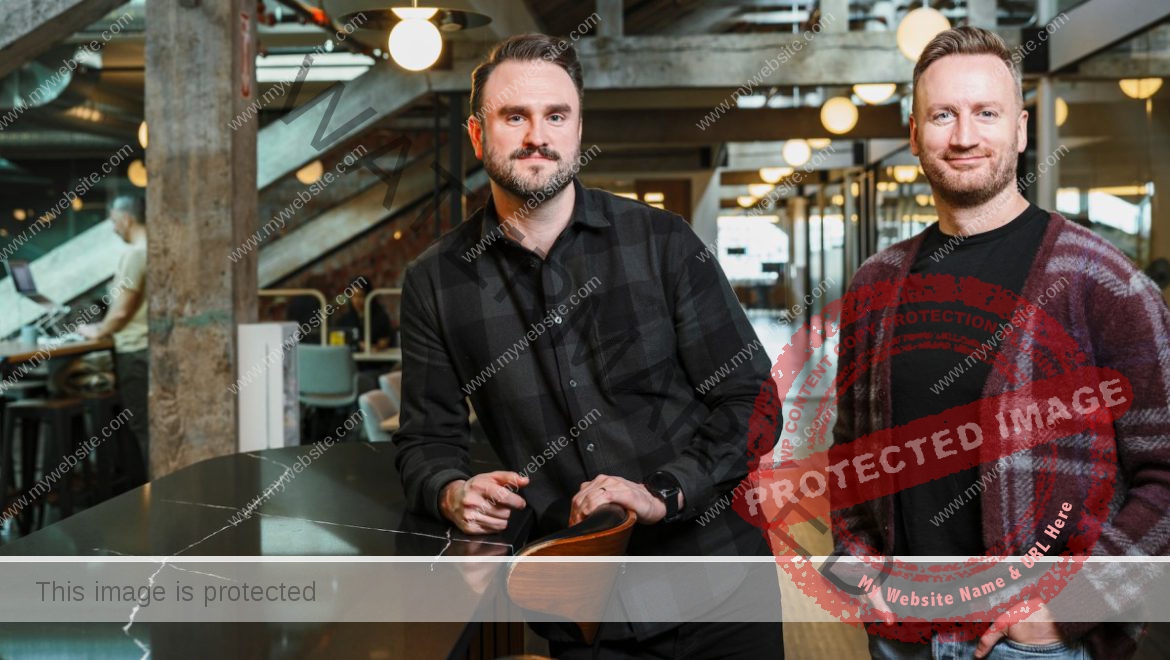Crypto? AI? Internet co-creator Robert Kahn already did it… decades ago | TechCrunch
Robert Kahn has been a consistent presence on the Internet since its creation — obviously, since he was its co-creator. But like many tech pioneers his resumé is longer than that and in fact his work prefigured such ostensibly modern ideas as AI agents and blockchain. TechCrunch chatted with Kahn about how, really, nothing has changed since the ’70s.
The interview was conducted on the occasion of Kahn (who goes by Bob in conversation) being awarded the IEEE Medal of Honor this week — you can watch the ceremony and speeches here.
Sound familiar? Last year the IEEE gave that that Vint Cerf, Kahn’s partner in creating the protocols underpinning the internet and web. They’ve taken different paths but share a tempered optimism about the world of technology, and a sense that everything old is new again.
This interview has been edited for length and clarity.
A lot of some of the problems, technical and otherwise, that we’re facing now in computing and the internet, they’re problems that we’ve seen and maybe even solved before. I’m curious whether you find anything particularly familiar about the challenges that we’re facing today.
Kahn: Well, I don’t think anything really surprises me. I mean, I was concerned right from the get-go that the internet had the potential to be misused. But in the early days it was a very willing set of collaborators from the research community who all principally knew each other, or at least knew of each other. And so there wasn’t much that went wrong. If you have only 100 people that don’t know each other, maybe that’s workable, but if you’ve got a billion people, you know, you get a little bit of everything in society.
[CERN leadership] actually approached me with the possibility of setting up a consortium, which they later set up at MIT… and I had too many questions, most probably off-putting, like what about misinformation or disinformation? How are you going to control what goes on this? I thought there were approaches; in fact, we were working on some. And so, in some ways, I’m not terribly surprised — I am disappointed that approaches that could have made a difference were not adopted.
I was reading about your “knowbots” — this is a very similar thing to an AI agent, that is empowered to go and interact in a less structured way than an API call or a simple crawl.
The whole idea was launched in the form of a mobile program [i.e. the program is mobile, not for mobiles]; we called them know bots, which was short for knowledge robots. You told it what you wanted to do and launched it — you know, make airplane reservations, check your email, look at the news, let you know about things that might affect you, just freed you up; it would be doing your bidding on the internet.
We essentially made it available at the time, it couldn’t have been more unfortunate, just about when the very first cybersecurity threat was occurring: the Morris worm, back in the late 80s. It was done by accident by some guy, but you know, people looked and said, Hey, when you’re gonna have these bad things happen, we don’t want other people’s programs showing up on our machines. As a formality, we just kind of put it on the back burner.
But out of that came something that was I think, very useful. We called it the digital object architecture. You probably follow some of the work on cryptocurrency. Well, cryptocurrency is like taking $1 Bill and getting rid of the paper, right, then being able to work with the value of money on the net. The digital object architecture was like taking the mobile programs and getting rid of the mobility. The same information is there, except you get to it in different ways.
Robert Kahn accepting the IEEE Medal of Honor.
It’s interesting that you bring up the the digital object architecture and crypto in the same sort of sentence. We have the DOI system, I see it primarily in scientific literature, of course, it’s tremendously useful there. But as a general system, I saw a lot of similarities with the idea of the cryptographically signed ledgers and sort of canonical locations for digital objects.
You know, it’s a shame that people think that these digital objects have to be only be copyrighted material. I wrote a paper called representing values in digital objects… I think we called them digital entities, just for technical reasons. I believe it was the first paper that actually talked about the equivalent of cryptocurrency.
But we’ve been talking about linking blocks for the last… going back to the space age, when you wanted to communicate with the distant parts of the out of space, you didn’t want to have to come back and wait for minutes or hours through transmission delays back to Earth to get something corrected. You want to have blocks that are in transit linked together. So you know, when the next block that might arrive the millisecond later, you can figure out what went wrong with the block before it was released. And that’s what blockchains are about.
In the digital object architecture, we’re talking about digital objects being able to communicate with other digital objects. That’s not people sitting at keyboards. You know, you can send a digital object or mobile program into a machine and ask it to interact with another digital object that may be representative of a book, to get inside that book, do work, and interact with that system. Or you know, like an airplane — people think airplanes need to interact with other airplanes for the purposes of collision avoidance and the like, and cars need to talk to cars because they don’t want to bang into each other. But what if cars need to talk with airplanes? Since these objects can be anything you can represent in digital form, you’ve potentially got everything interacting with everything. That’s a different notion of the internet than, you know, a high-speed telecommunications circuit.
Right, it’s about whether objects need to talk with objects, and enabling that as a protocol, whether it’s an airplane in a car. In the so called Internet of Things you have a connected doorbell, connected oven, a connected fridge, but they’re all connected via private APIs to private servers. It’s not about a protocol, it’s just about having a really bad software service living inside your fridge.
I really believe that most of the entities that would have had a natural interest in the internet had hopes that their own approach would be the thing that took over [rather than TCP/IP]. Whether it was Bell Systems or IBM or Xerox, Hewlett Packard, everybody had their own approach. But what happened was they kind of bottomed out. You had to be able to show interoperability; you couldn’t go in and ask for everybody to get rid of all their old stuff and take your stuff. So they couldn’t pick one company’s approach — so they were sort of stuck with the stuff we did at DARPA. That’s an interesting story in its own right, but I don’t think you should write about that (laughs).
If every house you walked into had a different power plug, you have a major problem. But the real issue is you can’t see it until you implement it.
I don’t think you can rely on government to take the lead. I don’t think he can rely on industry to take the lead. Because you might have 5 or 10 different industries that are all competing with each other. They can’t agree on whether there should be a standard until they’ve exhausted all other options. And who’s going to take the lead? It needs to be rethought at the national level. And I think the universities have a role to play here. But they may not necessarily know it yet.
We’re seeing a big reinvestment in the US chip industry. I know that you were closely involved in the late ’70s, early ’80s, with some of the nuts and bolts, and working with people who helped define computing architecture of the period, which has informed, of course, future architectures. I’m curious what you think about the evolution of the hardware industry.
I think the big problem right now, which the the administration has clearly noted, is we don’t have we haven’t maintained a leadership role in manufacturing of semiconductors here. It’s come from Taiwan, South Korea, China. We’re trying to fix that, and I applaud that. But the bigger issue is probably going to be personnel. Who’s going to man those sites? I mean, you build manufacturing capability, but do you need to import the people from Korea and Taiwan? OK, let’s teach it in schools… who knows enough to teach it in schools, are you going to import people to teach in the schools? Workforce development is going to be big part of the problem. But I think we were there before, we can get there again.












